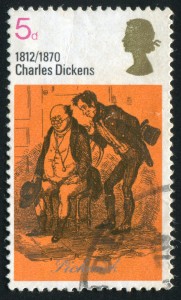The return of serialised literature
The return of serialised literature
The return of serialised literature
-
Hannah
-
Hannah
 We’re all familiar with serial dramas on the television, but books?
We’re all familiar with serial dramas on the television, but books?
Once, reading a story one instalment at a time was wildly popular. Back in Victorian England, for example, books themselves were premium items – expensive and requiring risky investment from publishers. Thus it was easier to break down a story to test its audience, and print it on the cheap paper of newspapers and magazines.
Charles Dickens is one the best known writers of serialised fiction. His book The Pickwick Papers was so popular it created a market for that kind of work. Other writers whose works were serialised include Alexandre Dumas, Eugene Sue,Wilkie Collins, Gustave Flaubert, Leo Tolstoy, Fyodor Dostoevsky, Sir Arthur Conan Doyle,Henry James, Harriet Beecher Stowe and Herman Melville.
Writing for serialisation meant:
- Writing long books!The Count of Monte Cristo, for example, spanned 139 instalments. Writers were paid by the episode, so they had good reason to write plenty of them.
- Structuring stories so that each chapter stood alone with a start, middle and end – and often a cliffhanger to make the reader desperate to read the next instalment. (In New York, when the ship bearing the end of Dickens’ The Old Curiosity Shop arrived in port, it was mobbed by readers desperate to know whether Little Nell would make it!)
- Keeping the writing tight. The episodes weren’t necessarily concise, but there was no room for digression or waffling, or you’d lose the reader’s short attention span.
Clearly, these areas of focus for the writers of the time were all beneficial to the works they created. That’s one of the reasons that serialised fiction is enjoying something of a renaissance. The digital revolution has created the means for writers to play with all kinds of serialisation ideas:
- Releasing a book as a series of short ebooks.
- Posting a novel chapter by chapter on Facebook.
- Publishing as you write on Wattpad.
- Tweeting 140 characters at a time on Twitter.
The last – and quite possibly the most avant-garde – has hit the headlines recently with David Mitchell, the award-winning author of Cloud Atlas, sharing a story via what he calls the ‘diabolical treble-strapped textual straitjacket’ of Twitter. It’s a fairly popular pursuit these days (there’s even a Twitter Fiction Festival).
If you’re thinking about serialisation, I think the main decision to make is whether to publish as you go, or write your entire work and then break it down. Clearly, many writers in the 19th-century had to write as they went – they may have been several episodes ahead of that which was most recently published, but they had no time to craft an entire work, edit it rigorously and then break it down. I wonder how that affected their writing quality? Certainly they would have needed to plan their work meticulously before beginning.
Personally, were I to consider seralising my fiction, I know I would have to write the entire work, polish it until it gleamed, and then send out the first part. But I admire those with the courage to just go for it, and I do think readers on platforms like Wattpad are understanding and respectful of those who are writing as they go – and therefore sometimes wish they could go back and change something.
What do you think of serialised fiction? Should it make a major comeback? Do you enjoy reading a work in parts – eagerly anticipating the next instalment; having the time to digest what you’ve read before moving on to the next part of the story? Do you read Twitter tales and books published in parts on the Kindle? I would love to hear your thoughts!